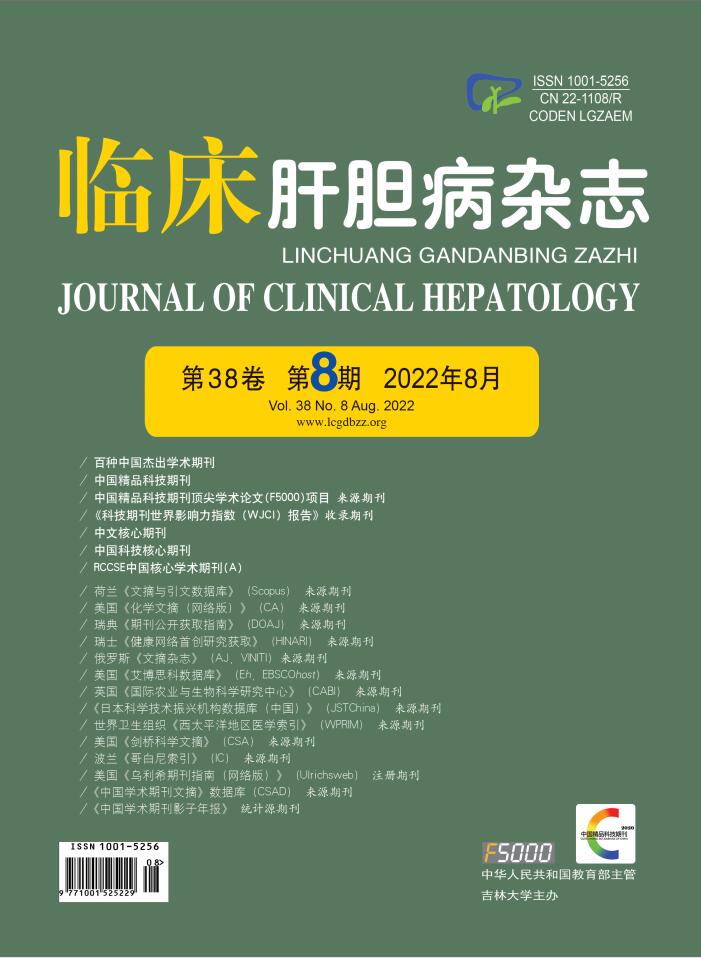| [1] |
Obstetrics Subgroup, Chinese Society of Obstetrics and Gynecology, Chinese Medical Association. Guidelines for the management of intrahepatic cholestasis of pregnancy (2015)[J]. J Clin Hepatol, 2015, 31(10): 1575-1578. DOI: 10.3969/j.issn.1001-5256.2015.10.003. |
| [2] |
XIN X, WANG Y, CHENG J, et al. Seroepidemiological survey of hepatitis B virus infection among 764, 460 women of childbearing age in rural China: A cross-sectional study[J]. J Clin Virol, 2016, 81: 47-52. DOI: 10.1016/j.jcv.2016.05.014. |
| [3] |
KUNTZ M, KUNTZ HD. Hepatology textbook and atlas[M]. Berlin, Heidelberg: Springer, 2008.
|
| [4] |
CHEN YC, ZHANG YM, ZHANG HS, et al. Effects of viral load of HBV-infected pregnant women on the humoral immune status and neonatal HBV infection rate[J]. Int J Virol, 2022, 29(1): 49-53. DOI: 10.3760/cma.j.issn.1673-4092.2022.01.010. |
| [5] |
CHEN Y, TIAN Z. HBV-induced immune imbalance in the development of HCC[J]. Front Immunol, 2019, 10: 2048. DOI: 10.3389/fimmu.2019.02048. |
| [6] |
Chinese Society of Infectious Diseases, Chinese Medical Association, Chinese Society of Hepatology, Chinese Medical Association. Guidelines for the prevention and treatment of chronic hepatitis B (version 2019)[J]. J Clin Hepatol, 2019, 35(12): 2648-2669. DOI: 10.3969/j.issn.1001-5256.2019.12.007. |
| [7] |
SHEN JC, LENG XJ, ZHANG Y, et al. Interpretation of managing HBV in pregnancy. Prevention, prophylaxis, treatment and follow-up[J]. J Clin Hepatol, 2016, 32(6): 1060-1068. DOI: 10.3969/j.issn.1001-5256.2016.06.008. |
| [8] |
PIECHOTA J, JELSKI W. Intrahepatic cholestasis in pregnancy: Review of the literature[J]. J Clin Med, 2020, 9(5): 1361. DOI: 10.3390/jcm9051361. |
| [9] |
LIU Y, MA C, JIA H, et al. Knowledge, attitudes, and practices regarding hepatitis B vaccination among hospital-based doctors and nurses in China: Results of a multi-site survey[J]. Vaccine, 2018, 36(17): 2307-2313. DOI: 10.1016/j.vaccine.2018.03.018. |
| [10] |
YULE CS, HOLCOMB DS, KRAUS AC, et al. Cholestasis: A prospective study of perinatal outcomes and time to symptom improvement[J]. Am J Perinatol, 2021, 38(5): 414-420. DOI: 10.1055/s-0040-1717076. |
| [11] |
GERMAIN AM, KATO S, CARVAJAL JA, et al. Bile acids increase response and expression of human myometrial oxytocin receptor[J]. Am J Obstet Gynecol, 2003, 189(2): 577-582. DOI: 10.1067/s0002-9378(03)00545-3. |
| [12] |
KONDRACKIENE J, KUPCINSKAS L. Intrahepatic cholestasis of pregnancy-current achievements and unsolved problems[J]. World J Gastroenterol, 2008, 14(38): 5781-5788. DOI: 10.3748/wjg.14.5781. |
| [13] |
ARTHUIS C, DIGUISTO C, LORPHELIN H, et al. Perinatal outcomes of intrahepatic cholestasis during pregnancy: An 8-year case-control study[J]. PLoS One, 2020, 15(2): e0228213. DOI: 10.1371/journal.pone.0228213. |
| [14] |
WU K, WANG H, LI S, et al. Maternal hepatitis B infection status and adverse pregnancy outcomes: a retrospective cohort analysis[J]. Arch Gynecol Obstet, 2020, 302(3): 595-602. DOI: 10.1007/s00404-020-05630-2. |
| [15] |
ROY A, PREMKUMAR M, MISHRA S, et al. Role of ursodeoxycholic acid on maternal serum bile acids and perinatal outcomes in intrahepatic cholestasis of pregnancy[J]. Eur J Gastroenterol Hepatol, 2021, 33(4): 571-576. DOI: 10.1097/MEG.0000000000001954. |
| [16] |
ZHANG C, WEI H, ZHU YX. Adverse pregnancy outcomes and mother-to-child transmission in patients with hepatitis B virus infection and intrahepatic cholestasis of pregnancy[J]. Ginekol Pol, 2021. DOI: 10.5603/GP.a2021.0110. [Online ahead of print] |
| [17] |
ABU-HAYYEH S, PAPACLEOVOULOU G, LÖVGREN-SANDBLOM A, et al. Intrahepatic cholestasis of pregnancy levels of sulfated progesterone metabolites inhibit farnesoid X receptor resulting in a cholestatic phenotype[J]. Hepatology, 2013, 57(2): 716-726. DOI: 10.1002/hep.26055. |
| [18] |
BATSRY L, ZLOTO K, KALTER A, et al. Perinatal outcomes of intrahepatic cholestasis of pregnancy in twin versus singleton pregnancies: is plurality associated with adverse outcomes?[J]. Arch Gynecol Obstet, 2019, 300(4): 881-887. DOI: 10.1007/s00404-019-05247-0. |
| [19] |
LEE RH, KWOK KM, INGLES S, et al. Pregnancy outcomes during an era of aggressive management for intrahepatic cholestasis of pregnancy[J]. Am J Perinatol, 2008, 25(6): 341-345. DOI: 10.1055/s-2008-1078756. |
| [20] |
ROOK M, VARGAS J, CAUGHEY A, et al. Fetal outcomes in pregnancies complicated by intrahepatic cholestasis of pregnancy in a Northern California cohort[J]. PLoS One, 2012, 7(3): e28343. DOI: 10.1371/journal.pone.0028343. |
| [21] |
KREMER AE, WOLF K, STÄNDER S. Intrahepatic cholestasis of pregnancy: Rare but important[J]. Hautarzt, 2017, 68(2): 95-102. DOI: 10.1007/s00105-016-3923-y. |
| [22] |
ZECCA E, de LUCA D, BARONI S, et al. Bile acid-induced lung injury in newborn infants: a bronchoalveolar lavage fluid study[J]. Pediatrics, 2008, 121(1): e146-e149. DOI: 10.1542/peds.2007-1220. |
| [23] |
FUNK AL, LU Y, YOSHIDA K, et al. Efficacy and safety of antiviral prophylaxis during pregnancy to prevent mother-to-child transmission of hepatitis B virus: a systematic review and meta-analysis[J]. Lancet Infect Dis, 2021, 21(1): 70-84. DOI: 10.1016/S1473-3099(20)30586-7. |









 本站查看
本站查看




 DownLoad:
DownLoad: